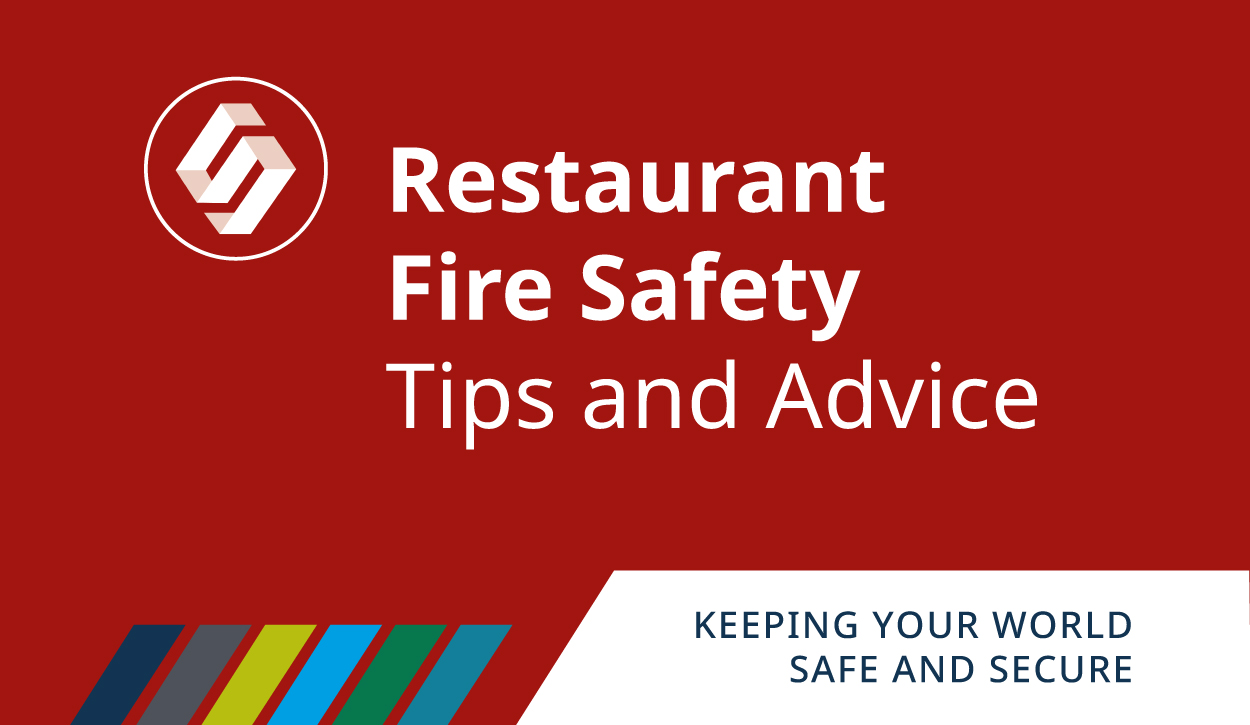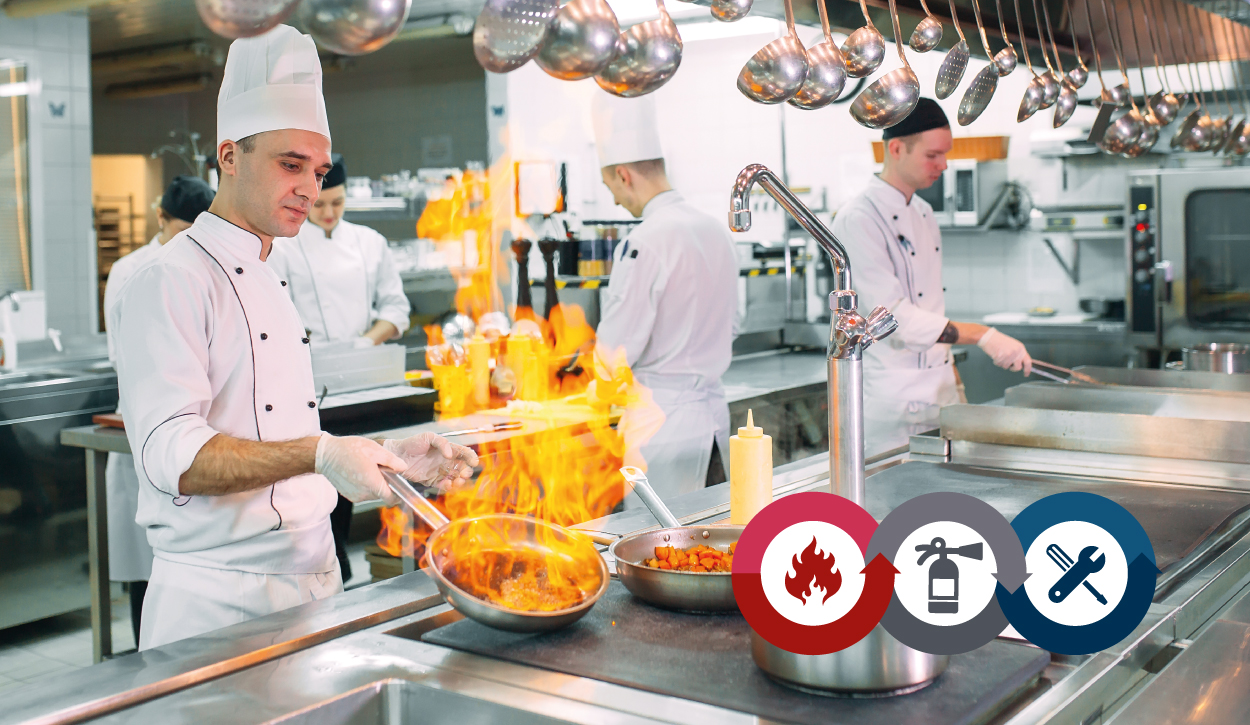Restaurant Fire Safety
The kitchen is the heart of every great restaurant. It is also a hectic and dangerous place. Hence our dedicated article is solely on restaurant fire safety.
Fires can have a massive impact on a business’s continuity and reputation, causing extensive property damage. Not to mention they can result in severe injury or fatality.
70% of fires in commercial kitchens originate in faulty extract ventilation systems due to a build-up of fat and grease (Kent Fire & Rescue). This substance is highly flammable and, when left uncleaned, increases the threat of fire dramatically.
The British Approvals for Fire Equipment (BAFE) found that fires involving restaurants and cafes represent 42% of all fires within the food and drink sector. Food and drink-related fires are statistically the third most likely to cause large fires in the UK (BAFE).
So how can your restaurant ensure it will not become part of these statistics?
The Regulatory Reform (Fire Safety) Order of 2005 states that your extract systems must be part of your fire risk assessment with action taken to reduce any possible fire risk to buildings or occupants. If you fail to carry out the proper cleaning and maintenance requirements, this could breach Environmental Health regulations and even terminate your fire insurance policy.
What are the common restaurant fire hazards to avoid?
Electricity and gas are the forms of energy used to power a commercial kitchen. Everywhere that point is found, there is a potential fire hazard.
The following list highlights the most common causes of restaurant fires:
- Open flames – Loose clothing and hair can easily catch fire if they contact open flames.
- Full grease traps – Full grease traps have pieces of food and maybe even stray paper products inside them and can catch fire when more hot grease is added.
- Poor housekeeping – Fire can quickly spread in dirty and cluttered kitchens and storage areas.
- Faulty or frayed electrical cords – Frayed electrical equipment are more likely to spark and cause an electrical fire.
- Improper storage of flammable materials must be stored away from open flames or heat sources, so they do not combust.
- Outdoor areas – patio heaters and their gas supplies need to be handled carefully.
What restaurant owners can do to protect employees and customers from a fire:
- Train employees on fire extinguisher use – Train employees on each shift how to properly use a fire extinguisher, so in the event of a fire, someone in the restaurant will know what to do. Also, make sure you have the correct extinguishers to hand.
- Maintain and check your fire extinguishers regularly.
- Install fire alarms
- Have a working sprinkler system installed
- Ensure your electrics are PAC tested annually
- Ensure employees do not attempt to fight the fire – Employees must first sound the alarm before battling the flames themselves.
- Empty grease traps regularly – Overfilled grease traps can catch fire. Make sure this is part of your daily cleaning process.
- Keep walkways free from clutter – Cluttered aisles will hamper employees and customers trying to escape from a fire.
- Provide sufficient lighting – The emergency exit route needs to be adequately lit.
- Make sure exit signs are functioning – This allows employees and paying customers to identify the exit in an emergency quickly.
Sometimes it’s not only the staff and customers affected by a restaurant fire. In this instance, the tenants also rented the flat above, as you will read in this article about the restaurant fire in Wembley earlier this year.
If you need additional assistance in Restaurant fire safety and managing your fire risk assessments and staff training, our experts will help you through every step.
If you’d like to discuss any of the above-related services, please call 03300 417170 where one of our experienced members of staff will be happy to help. Alternatively, contact us here.


